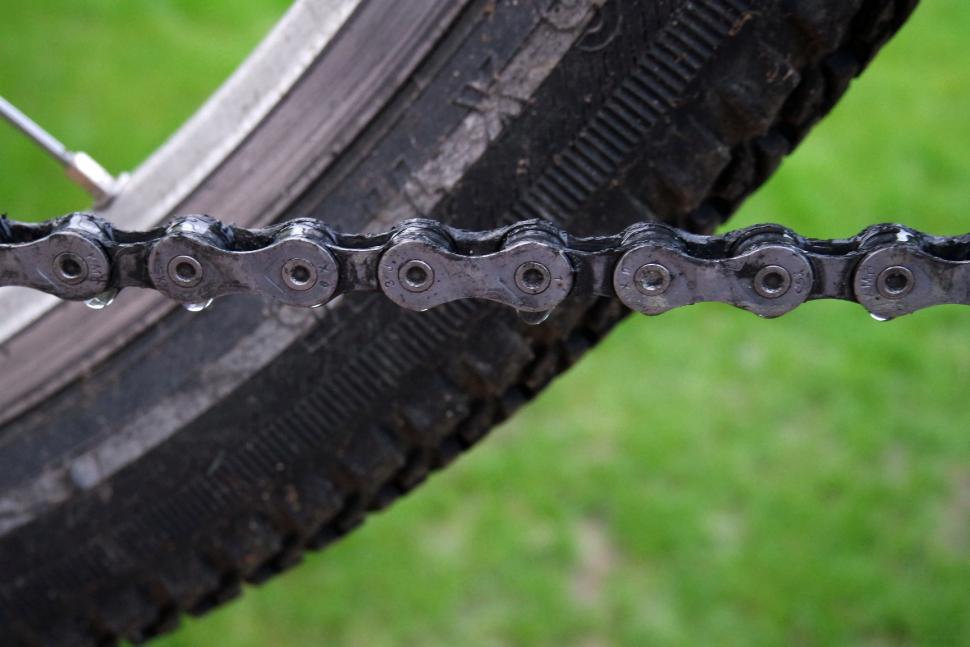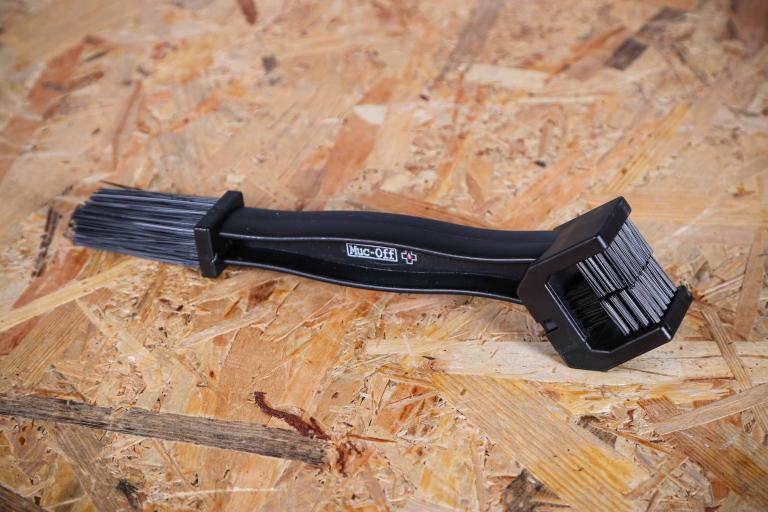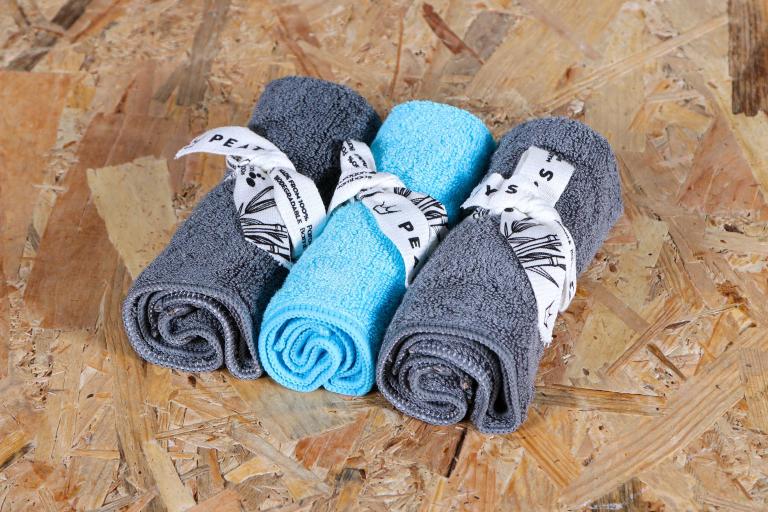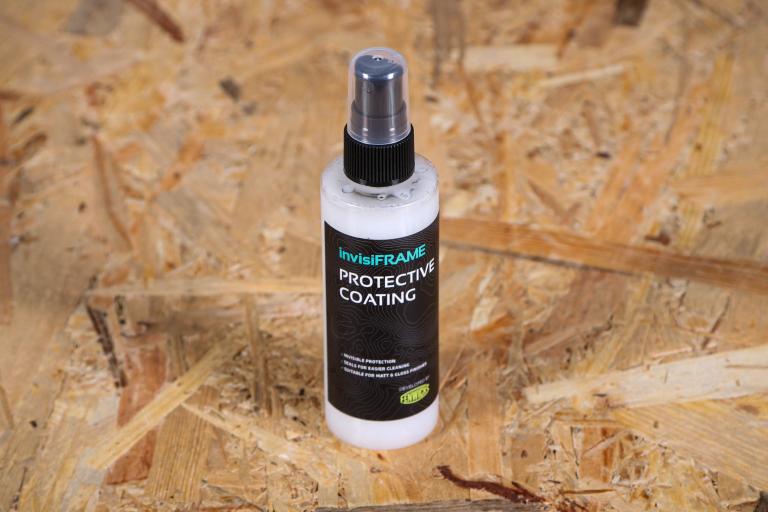- News
- Reviews
- Bikes
- Accessories
- Accessories - misc
- Computer mounts
- Bags
- Bar ends
- Bike bags & cases
- Bottle cages
- Bottles
- Cameras
- Car racks
- Child seats
- Computers
- Glasses
- GPS units
- Helmets
- Lights - front
- Lights - rear
- Lights - sets
- Locks
- Mirrors
- Mudguards
- Racks
- Pumps & CO2 inflators
- Puncture kits
- Reflectives
- Smart watches
- Stands and racks
- Trailers
- Clothing
- Components
- Bar tape & grips
- Bottom brackets
- Brake & gear cables
- Brake & STI levers
- Brake pads & spares
- Brakes
- Cassettes & freewheels
- Chains
- Chainsets & chainrings
- Derailleurs - front
- Derailleurs - rear
- Forks
- Gear levers & shifters
- Groupsets
- Handlebars & extensions
- Headsets
- Hubs
- Inner tubes
- Pedals
- Quick releases & skewers
- Saddles
- Seatposts
- Stems
- Wheels
- Tyres
- Health, fitness and nutrition
- Tools and workshop
- Miscellaneous
- Tubeless valves
- Buyers Guides
- Features
- Forum
- Recommends
- Podcast
review
 Green Oil Clean Chain Degreaser Jelly.jpg
Green Oil Clean Chain Degreaser Jelly.jpg£3.99
VERDICT:
Capable degreaser and a credible alternative to petrochemical solvents
Weight:
122g
Contact:
At road.cc every product is thoroughly tested for as long as it takes to get a proper insight into how well it works. Our reviewers are experienced cyclists that we trust to be objective. While we strive to ensure that opinions expressed are backed up by facts, reviews are by their nature an informed opinion, not a definitive verdict. We don't intentionally try to break anything (except locks) but we do try to look for weak points in any design. The overall score is not just an average of the other scores: it reflects both a product's function and value – with value determined by how a product compares with items of similar spec, quality, and price.
What the road.cc scores meanGood scores are more common than bad, because fortunately good products are more common than bad.
- Exceptional
- Excellent
- Very Good
- Good
- Quite good
- Average
- Not so good
- Poor
- Bad
- Appalling
Green Oil Clean Chain Degreaser Jelly is a non-flammable, non-toxic, citrus-based infusion designed to strip chains and discs of their lubes and ingrained grot. It does the job well, and even if it's no better at it than some competitors, it's less toxic than many of them.
I'm told it's derived from fermented apple and coconut oil, which when diluted with 900ml of water produces a litre of bike wash. It used to be available as a concentrate in a 1 litre bottle for serious workshop fettling, a form I've preferred for a few years since it can be used as a neat degreaser, diluted to suit.
Back to the 100ml version... Blended for chains and discs, we are told it can be used in several ways. The most obvious is the default: park bike(s) outside, shake the bottle, pop the spout and dispense carefully – like a chain lube in other words.
Now rotate the cranks a few turns and allow it to nibble away for a minute or so while you fetch a bucket of tepid water and a stiff transmission type brush.
When tackling disc rotors, dribble it straight on, and agitate with your brush. Leave between 30 and 60 seconds before rinsing. Tepid water strikes the best balance between comfort and efficiency, although the hotter you can bear it, the faster it works.
Dry thoroughly with a clean rag and, in theory, you're done. In practice, this method works much better than Green Oil's other suggestion, which involves pouring 30ml into a chain bath, introducing water and leaving to marinate.
> Check out more road.cc reviews of cleaning products here
Ceramic and other sophisticated lubes (including Fenwick's Stealth) vanished in two treatments (5 minutes) using the first method, ditto 10w40 motor oils, bog standard wet types and their gritty contaminant too.
Middleweight Teflon infusions and barely-there summer synthetics were dismissed first time, with minimal bristle plot persuasion.
Putting all this into perspective, the most potent petrochemical strippers will do these tasks in two short blasts, 30 seconds marinating time, followed by a quick scrub. I had my Univega's filthy transmission – rings, chain, cassettes, jockey wheels and derailleur cages – gleaming in 12 minutes flat. Like for like, the Green Oil achieved similar results in 15-16.
If purchase price is your only determinant, there are plenty of cheap solvents that will strip chains, cassettes and rings bare and with frightening efficiency. However, they are often toxic and/or highly flammable. There are others who swear by washing-up liquids. It ultimately boils down to personal preference. However, my overall mark is compared with similar bike-specific products.
Verdict
Capable degreaser and a credible alternative to petrochemical solvents
road.cc test report
Make and model: Green Oil Clean Chain degreaser jelly
Size tested: 100ml
Tell us what the product is for, and who it's aimed at. What do the manufacturers say about it? How does that compare to your own feelings about it?
Green Oil says:
"Clean Chain Degreaser
Revolutionary degreasing gel!"
Clean Chain degreaser was developed due to two frustrations with other degreasers .
1- They are runny
2- They are petrochemical based, damaging your skin, garden and environment
(Though sometimes claiming 'orange extract' content for a greenwash edge!)
Clean Chain is a degreasing gel, so it sticks to the chain for effective degreasing.
Clean Chain degreaser is 100% Natural and biodegradable"
Does exactly what it says on the tube and will also tackle other areas of the drivetrain, discs too.
Tell us some more about the technical aspects of the product?
- Made in Britain
- Unique gel formula- easy to apply
- 100% natural ingredients
- Can be diluted to make 1 litre of Green Clean bike cleaner
Rate the product for quality of construction:
7/10
Rate the product for performance:
7/10
Rate the product for durability:
7/10
Rate the product for weight (if applicable)
7/10
Rate the product for comfort (if applicable)
7/10
Clean and convenient to apply.
Rate the product for value:
6/10
Reasonably priced. If purchase price is your only determinant, there are plenty of cheap solvents that will strip chains, cassettes and rings bare and with frightening efficiency. However, they are often toxic and/or highly flammable. There are others who swear by washing up liquids. It ultimately boils down to personal preference. My overall mark is compared with similar bike-specific products.
Tell us how the product performed overall when used for its designed purpose
Overall, Green Oil Clean Chain Degreaser Jelly has proven itself a credible alternative to traditional petrochemical anti-lubes. Ours made surprisingly short work of most oils and, where appropriate, their contaminant. True to claims, it also works well on grotty discs.
Tell us what you particularly liked about the product
Convenient, effective and much kinder to the environment than petrochemicals.
Tell us what you particularly disliked about the product
Nothing given the design brief.
Did you enjoy using the product? Yes
Would you consider buying the product? Yes
Would you recommend the product to a friend? Yes
Use this box to explain your score
It's a good product that scores 7 on everything except value.
About the tester
Age: 42
I usually ride: Rough stuff tourer based around 4130 Univega mountain bike frameset My best bike is: 1955 Holdsworth Road Path and several others including cross & traditional road
I've been riding for: Over 20 years I ride: Most days I would class myself as: Experienced
I regularly do the following types of riding: cyclo-cross, commuting, touring, fixed/singlespeed, mountain biking
Shaun Audane is a freelance writer/product tester with over twenty-eight years riding experience, the last twelve (120,000 miles) spent putting bikes and kit through their paces for a variety of publications. Previous generations of his family worked at manufacturing's sharp end, thus Shaun can weld, has a sound understanding of frame building practice and a preference for steel or titanium framesets.
Citing Richard Ballantine and an Au pair as his earliest cycling influences, he is presently writing a cycling book with particular focus upon women, families and disabled audiences (Having been a registered care manager and coached children at Herne Hill Velodrome in earlier careers)
Latest Comments
- ktache 1 sec ago
Now Emily Chappele really liked the Lezyne , I have the HV version, good, but I find the handle uncomfortable in use. I've often wondered about the...
- biking59boomer 6 min 50 sec ago
What about this one!?
- Muddy Ford 8 min 13 sec ago
Charlie Alliston got 18mths and is the reference case (because there are so few cases) for all campaigns by anti-cyclists that 'cyclists are not...
- RoubaixCube 55 min 30 sec ago
I do see cubes being reviewed once in a while. But I think the company/brand as a whole doesnt push a whole lot of money into their marketing...
- belugabob 1 hour 9 min ago
My local football practice pitches (all weather, in a fenced off area, are regularly the scene of inconsiderate parking, with vehicles blocking the...
- chrisonabike 1 hour 27 min ago
Don't forget though "Englishman's home is his castle" - which includes my rights to grow a giant curtain wall of Leylandii to "protect my privacy"....
- Spangly Shiny 1 hour 34 min ago
Assos ASOS anyone?
- chrisonabike 1 hour 48 min ago
Replace them all with Bromptons and they'd take up zero space within days or even hours, as they are all relocated elsewhere. To eBay or possibly...
- Andrewbanshee 2 hours 19 min ago
Where I live we are experiencing a lot of housing development on small and large plots of land. These developers don't seem to have problems...
- hawkinspeter 2 hours 25 min ago
Sometimes peanuts





Add new comment
1 comments
"When tackling disc rotors, dribble it straight on, and agitate with your brush. Leave between 30 and 60 seconds before rinsing."
Everything I've ever read about disc brakes says to use nothing. Nothing. Water, maybe. But you don't want to be introducing any sort of chemical, and you don't want to be affecting the layer of pad material on the disc itself - this is critical to braking performance. Reseting or setting up a disc, the burn-in process is deliberately designed to deposit a layer of pad material on the rotor.
The force of pad on rotor is far, far stronger than any brush action you could ever impart.